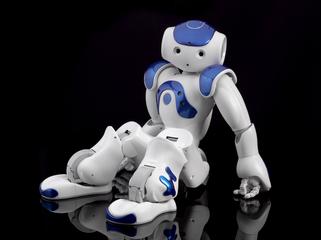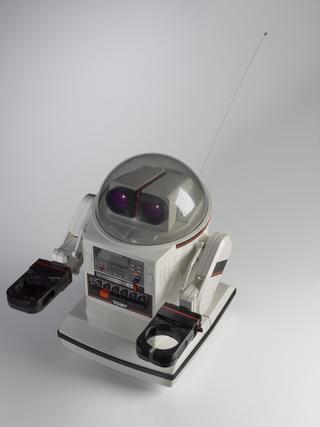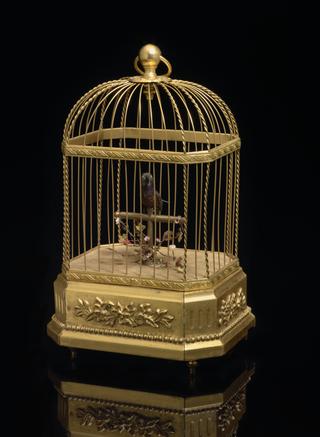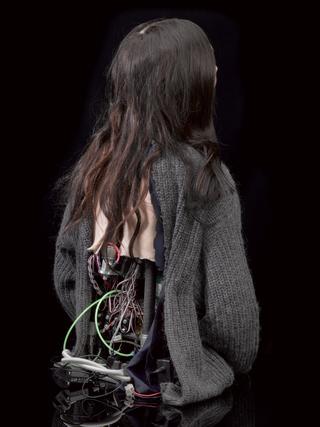






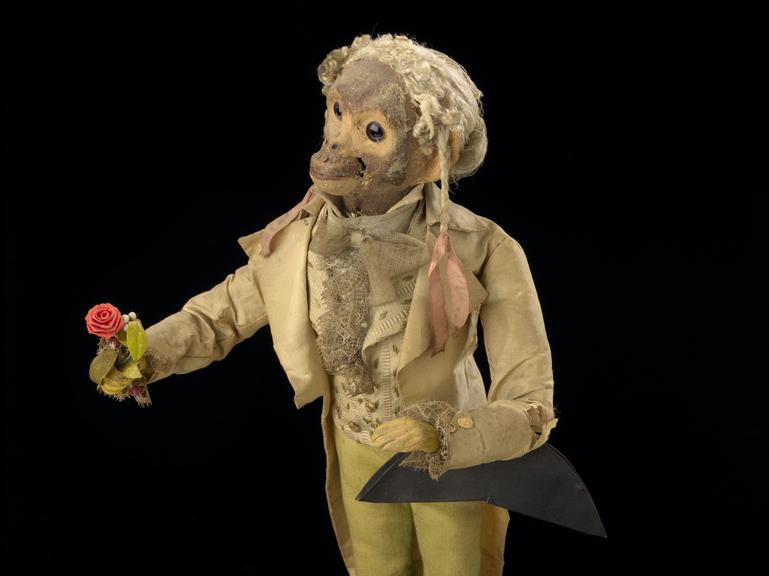



Automaton monkey, maker unknown, Paris, c1850
‘Genteel’ automaton monkey, maker unknown, Paris, c1850. This relatively early figure is an interesting example of the use of four relatively simple mechanisms in parallel to produce more complex ‘compound’ movements. The idea of multiplying simple movements into more subtle ones is an enduring feature of robots, including particularly Grey Walter’s work on cynernetic tortoises in the 1950s.
The figure is an early exemplar of the nineteenth century fascination with mechanical figures which provided fertile ground for the rise of the robot in popular culture during the twentieth. This figure is remarkably early – the bulk of automaton figures date from the 1880s onwards. Also, the clothing and mechanism are entirely original, having not been repaired or updated.
Though to our eyes such a figure seems rather grotesque, monkeys were popular subjects for automatons in the nineteenth century, often being portrayed smoking, performing magic tricks, or playing musical instruments. This one differs because, rather than running on a mechanism operating on a fixed cycle, the movements are controlled from four keys on the front of the base, allowing a degree of freedom and also the combination of different movements, to provide a more subtle effect. The seeming Regency dress (and bicorn, with cockade) of the figure may have been a satirical comment on class at the time of the monkey’s manufacture.
Details
- Category:
- Human Robotics
- Object Number:
- 2017-172
- Materials:
- brass (copper, zinc alloy), paint, textile and wood (unidentified)
- type:
- automaton
- copyright:
- House of Automata
- credit:
- House of Automata
